Can dual-use and aerospace become Europe’s innovation frontiers?
Amid growing geopolitical tensions and major announcements of rises in defence spending across Europe to 3-3.5% of GDP, a clear message resonated at InnoHive 2025: dual-use innovation – the development of technologies with both civilian and military applications – is no longer optional. It is now central to Europe’s sovereignty, resilience and economic competitiveness.
Speakers from manufacturing, artificial intelligence (AI) and defence circles stressed: if Europe is to thrive in a volatile global landscape, it must embrace dual-use innovation – not cautiously, but boldly and systemically.
The concept of dual-use technologies is not new. Yet for decades, Europe has maintained a cautious distance from defence-linked innovation, unlike the US, where agencies like the Defence Advanced Research Projects Agency (DARPA) have spearheaded the development and commercialisation of groundbreaking defence technologies, from the internet to GPS. Europe’s research focus, meanwhile, has remained largely civilian, often deliberately separating defence from broader research efforts.
But that world has changed. Russia’s invasion of Ukraine, the fragmentation of global supply chains and the threat of cyberattacks have shattered old assumptions.
We’ve had generations in Europe that believed peace was permanent. Rebuilding defence capabilities means rethinking values and preparing for future threats in a systematic, sovereign way.
Thibauld Jongen, Director at the AI Data Robotics Association (ADRA)
Fabrizio Gagliardi, Senior Advisor at the Barcelona Supercomputing Centre, reminded the audience how different things were in Europe’s postwar institutions: “When CERN was founded in the 1950s, dual-use research was forbidden, as in most of its member states,” he said. “Now, Europe is rethinking this policy. New solutions for civil applications can result from defence innovations. Ukraine is using AI on the battlefield in real-time – proof that urgency accelerates innovation.”
“Cheap drones are taking down million-dollar tanks. That’s not theory, it’s reality. The battlefield is now a proving ground for startups,” highlighted Benjamin Wolba, Co-Founder of the European Defense Tech Hub.
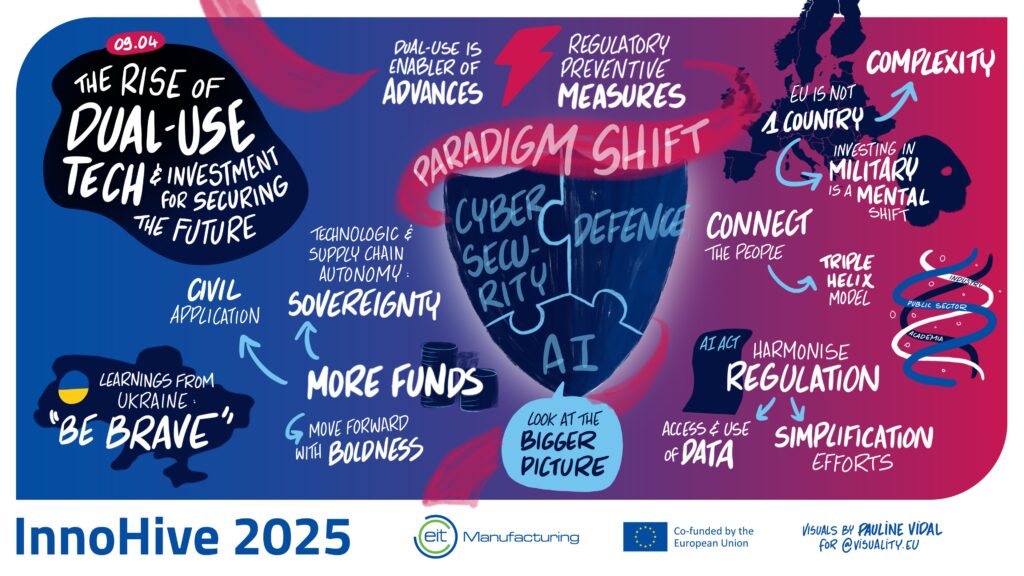
Visuals by Pauline Vidal
Critically, defence is not just a risk – it can also be a path to scale for innovators. Ukrainian startups that pivoted from agricultural drones to mobile reconnaissance units demonstrate how defence can open commercial doors.
The theory is simple: mission-driven innovation, motivated by urgent, society-wide challenges, does not merely benefit defence. It catalyses advances across civilian sectors too, from mobility and energy to healthcare. In today’s climate, dual-use is not just about defence, it is about creating a stronger, more resilient Europe.
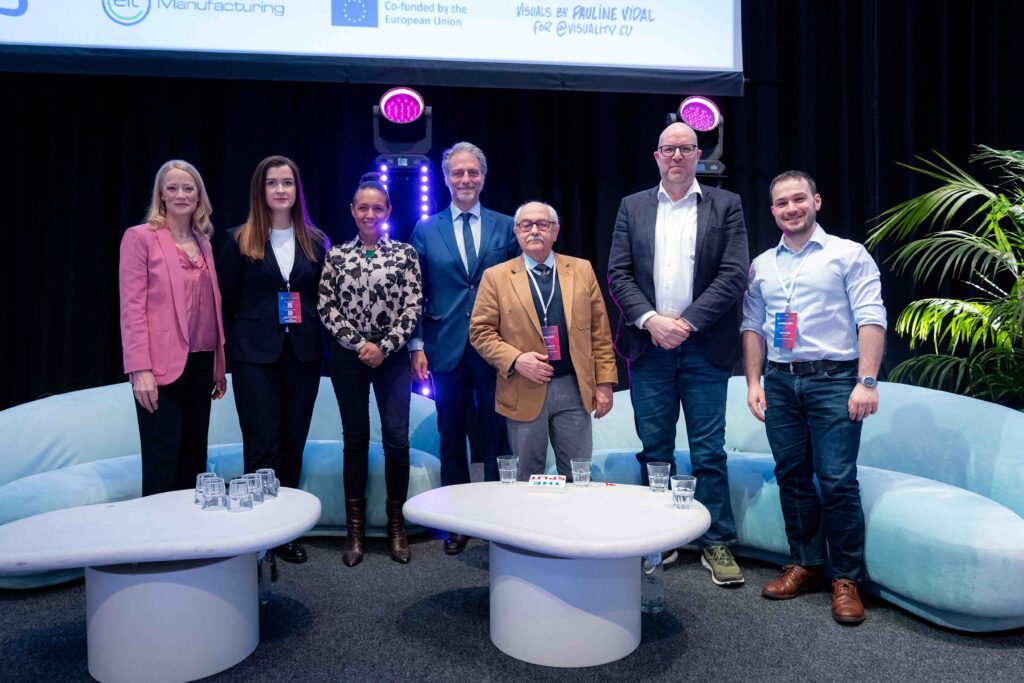
Moderator Karin Helmstaedt, Egle Markeviciute, Raya White, Thibauld Jongen, Fabrizio Gagliardi, Rudiger Frickenschmidt and Benjamin Wolba at InnoHive 2025. Photo credit (c) Xavier Lejeune
Where the opportunities are emerging
The global context is stark. The US continues to invest heavily in defence-driven technologies, with massive public-private partnerships accelerating progress. This position is exacerbated somewhat due to shifting relations between the US and Europe, making the need for united European investment in defence and critical infrastructure imperative.
Europe already produces advanced defence technologies, but risks falling behind unless it takes decisive steps to bolster its defence capabilities. Meanwhile, China is integrating commercial technologies into its defence capabilities as part of a national policy, through the Military-Civil Fusion strategy.
Funding, data, regulation and culture
While the opportunities are vast, real obstacles remain. Funding and scale are a real challenge, but vital now, and there is money on the table – more than EUR 1 billion in EU defence and dual-use innovation funding, according to Raya White, Futurist, AI Strategist and Co-Founder of SPATIALx.
Data and IP management are also crucial factors to consider. Data is the lifeblood of both aerospace and AI-driven manufacturing – but trust barriers block its full potential.
As Paul Byrnes, CEO of Mavarick AI, argued: “We need a data standardisation framework. Encrypted data sharing without giving away the crown jewels.”
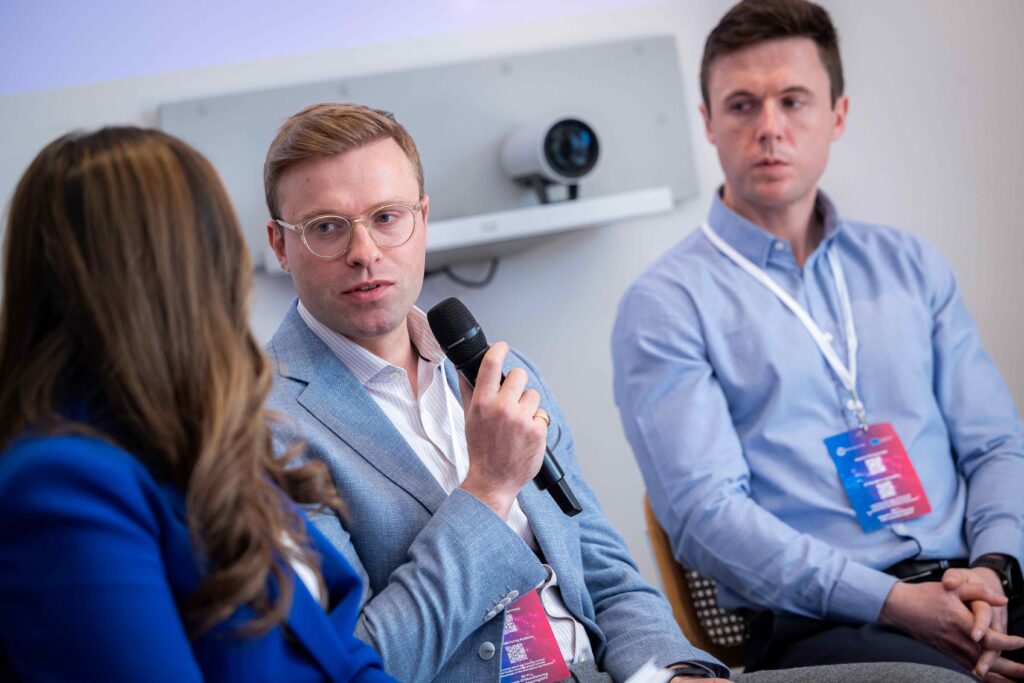
Claudia Romero Jones, Bose Rothe and Paul Byrnes at InnoHive 2025. Photo credit (c) Xavier Lejeune
This is, of course, where regulation plays its part. For Europe, it was seen as a double-edged sword in the dual-use debate: Europe’s reputation for regulatory leadership can be both a blessing and a curse, with a tendency for overregulation risking holding back emerging industries before they scale.
We have good ideas on paper, but implementation is the hard part.
Egle Markeviciute, Head of Digital and Innovation Policy at Consumer Choice Center
As Rudiger Frickenschmidt, AI Sales & Ecosystem Lead at Fujitsu, succinctly put it: “The EU tends to over-regulate markets that don’t even exist yet.”
A new model for innovation
If there was one consensus across the discussions, it was that Europe needs a new model of innovation — one that is mission-driven, cross-sector, pragmatic about risk and, crucially, rooted in human collaboration. The technologies exist, but real transformation depends on breaking down barriers between sectors, mindsets and institutions.
At the heart of this shift is trust: the willingness to share knowledge, co-develop solutions and take collective risks. Claudia Romero Jones, Ecosystem and Project Manager at EIT Manufacturing, highlighted that the gap between startups and large industrial players is not simply about technology readiness – it is about building relationships: “Small pilots and step-by-step wins are crucial. Trust builds when companies engage in manageable, transparent collaborations.”
In the highly sensitive world of dual-use, where intellectual property, sovereignty and national interests are at stake, trust becomes the key enabler – or the fatal bottleneck. Fabio Esposito, R&D Manager at TEC Eurolab, put it even more starkly: “It’s about people. One open person at the proposal stage can change everything.”
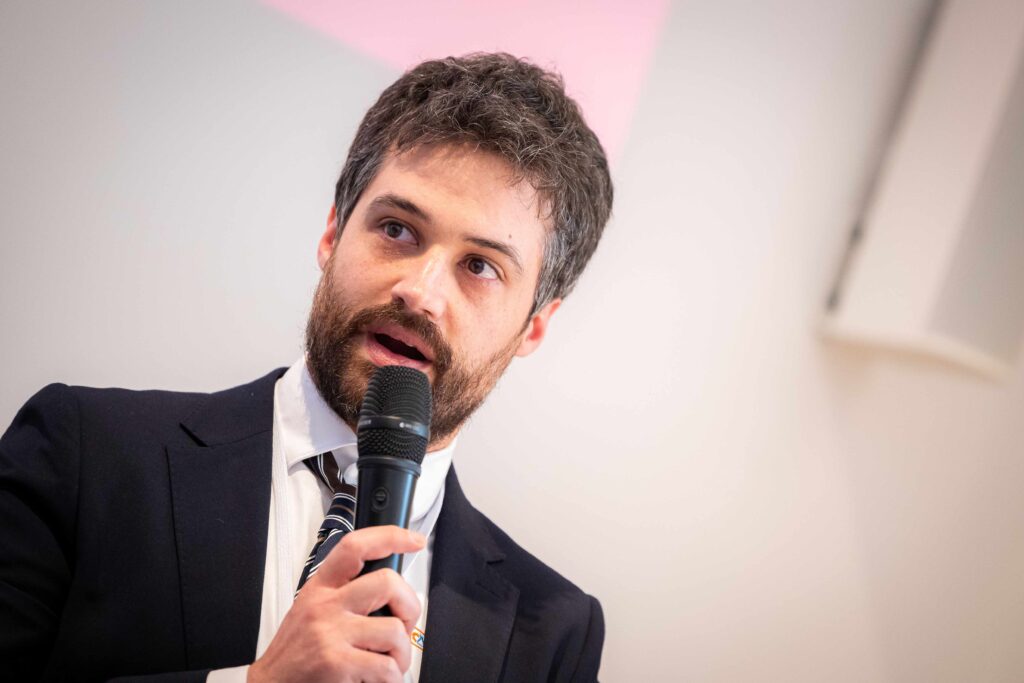
Fabio Esposito at InnoHive 2025. Photo credit (c) Xavier Lejeune
Whether transferring advanced aerospace technologies into manufacturing or scaling AI for both civilian logistics and military operations, progress hinges less on technical barriers and more on human ones – openness, willingness to collaborate and the ability to see beyond immediate sectoral or national interests.
This cultural shift towards transparent partnerships, shared risk and mutual respect for each other’s core business models is what will ultimately determine Europe’s ability to scale dual-use innovations. It also requires a rethink of how risk is approached.
Speakers noted that not every initiative can succeed and not every pilot will reach market maturity – but speed and boldness are critical.
Some areas need to be highly regulated, yes, but others, especially early pilots, need space to breathe.
Bosse Rothe, Founder and CEO of Holy Technologies
A new model of innovation must move beyond technical excellence alone. It must be people-powered, trust-driven and mission-focused – a model where partnerships are built for the long term and where failure at early stages is seen not as a liability but as an essential part of scaling breakthrough technologies.
Breaking silos in the aerospace industry
The conversation on dual-use also shone a spotlight on the traditionally siloed aerospace manufacturing. Aerospace has long been the home of cutting-edge technology – yet commercialisation beyond its narrow markets has been slow.
In a session aptly titled The Earth Race, aerospace leaders highlighted how their sector’s innovations in composites, autonomy and precision manufacturing are ripe for wider manufacturing use.
But integration is not automatic. Rothe warned of the complexity: “Aerospace has a unique environment, so tech transfer isn’t always straightforward.”
Yet the prize is enormous. If aerospace’s high-precision technologies can be translated into mainstream manufacturing, it could vastly enhance Europe’s industrial competitiveness – across automotive, energy and beyond.
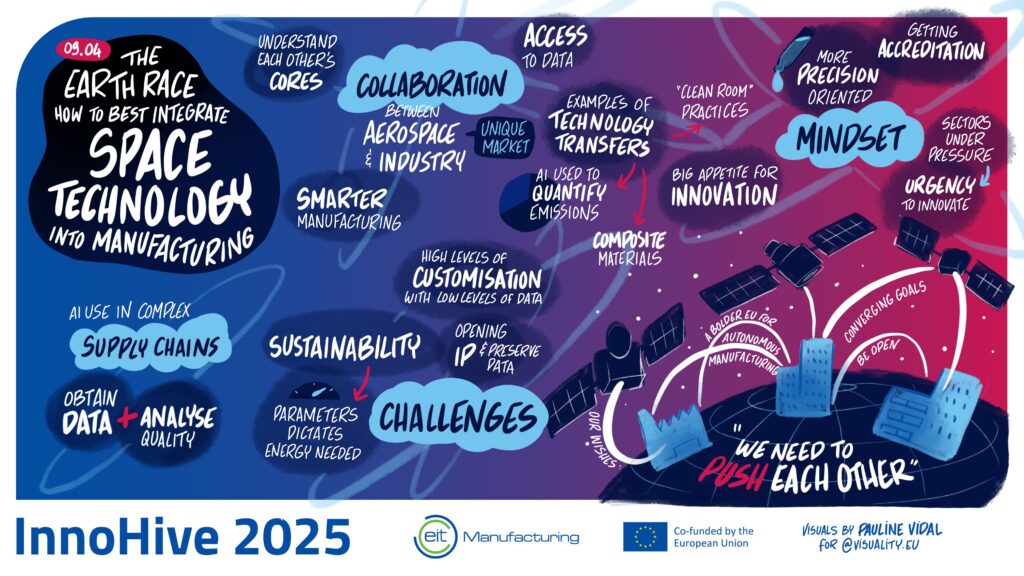
Visuals by Pauline Vidal
The convergence is already happening. Lightweight composites, first perfected for satellites, are now appearing in electric vehicle (EV) chassis. Aerospace standards for autonomous systems are influencing smart manufacturing protocols.
The race is not just geopolitical — it is against standing still and doing nothing. As Rothe put it: “We must be bold and that is scary, but we need to be part of this opportunity.”

